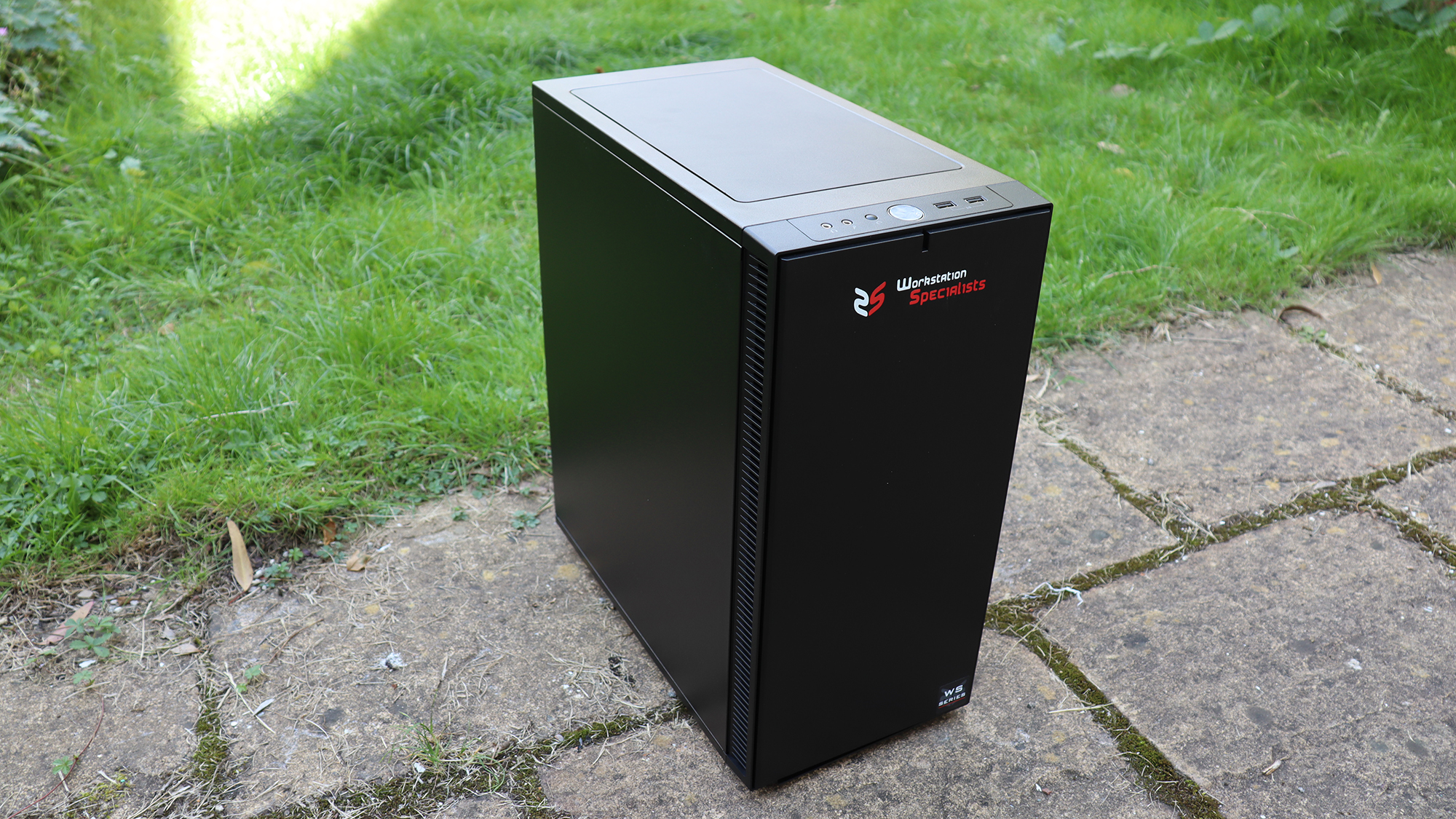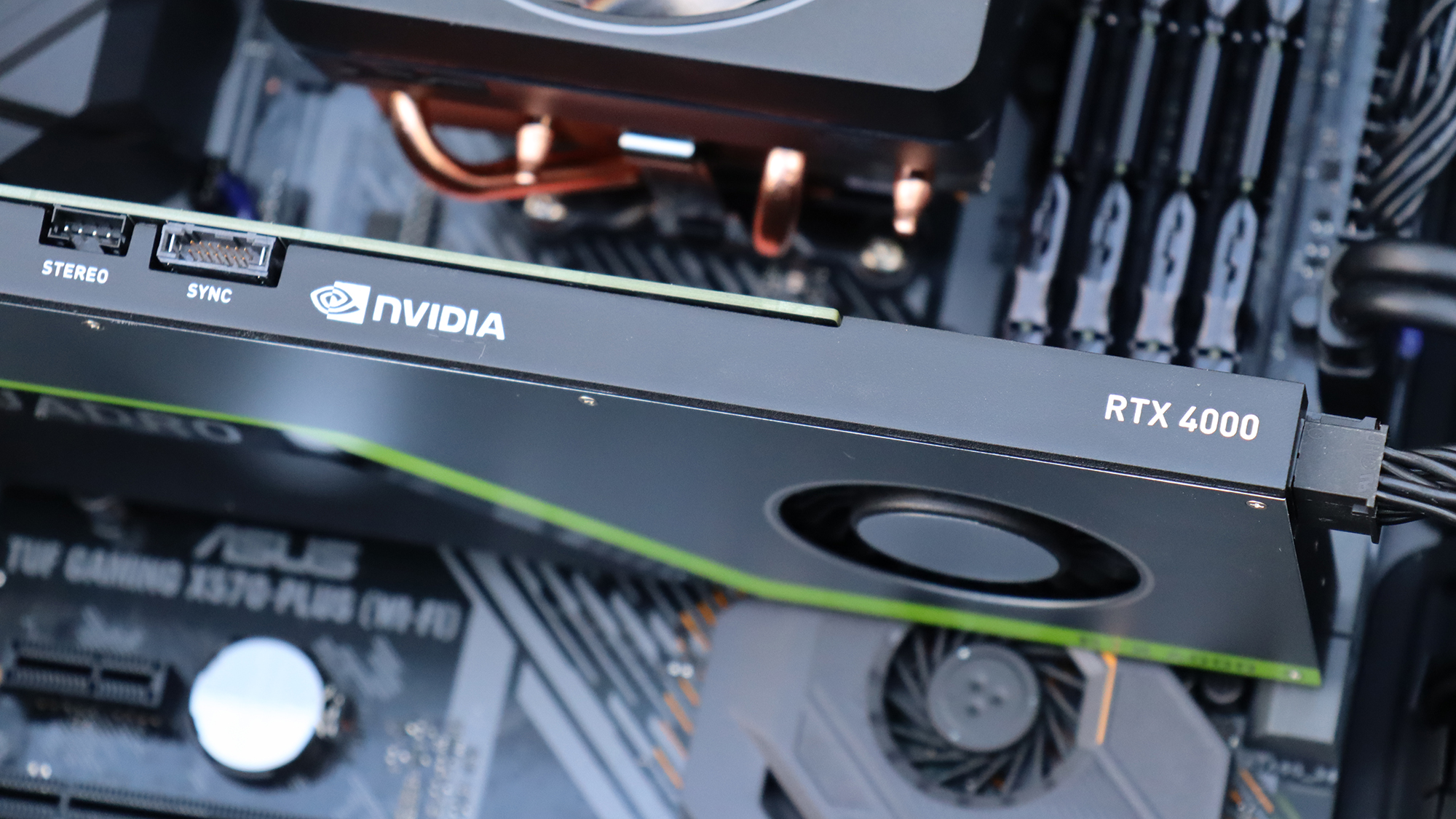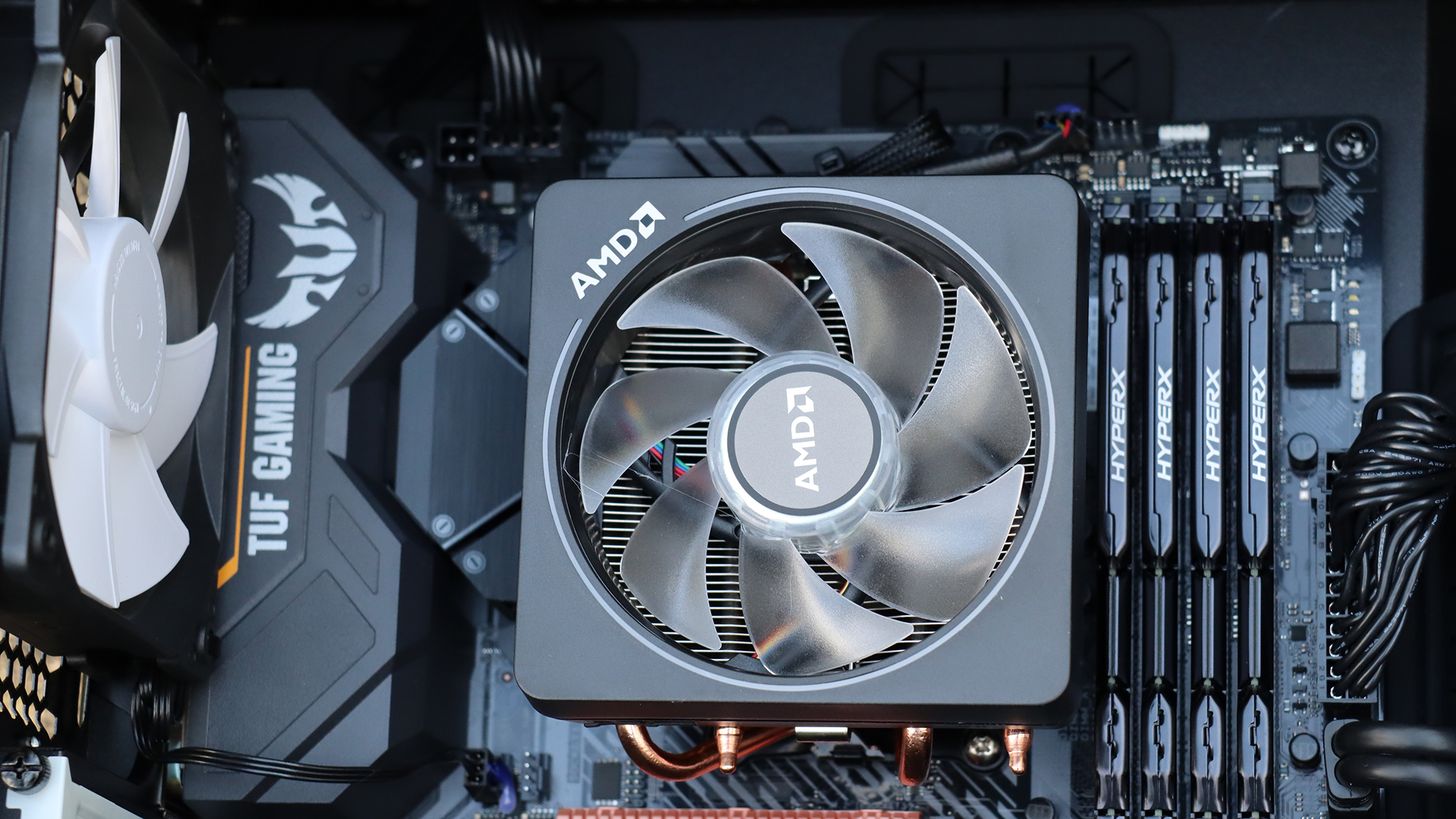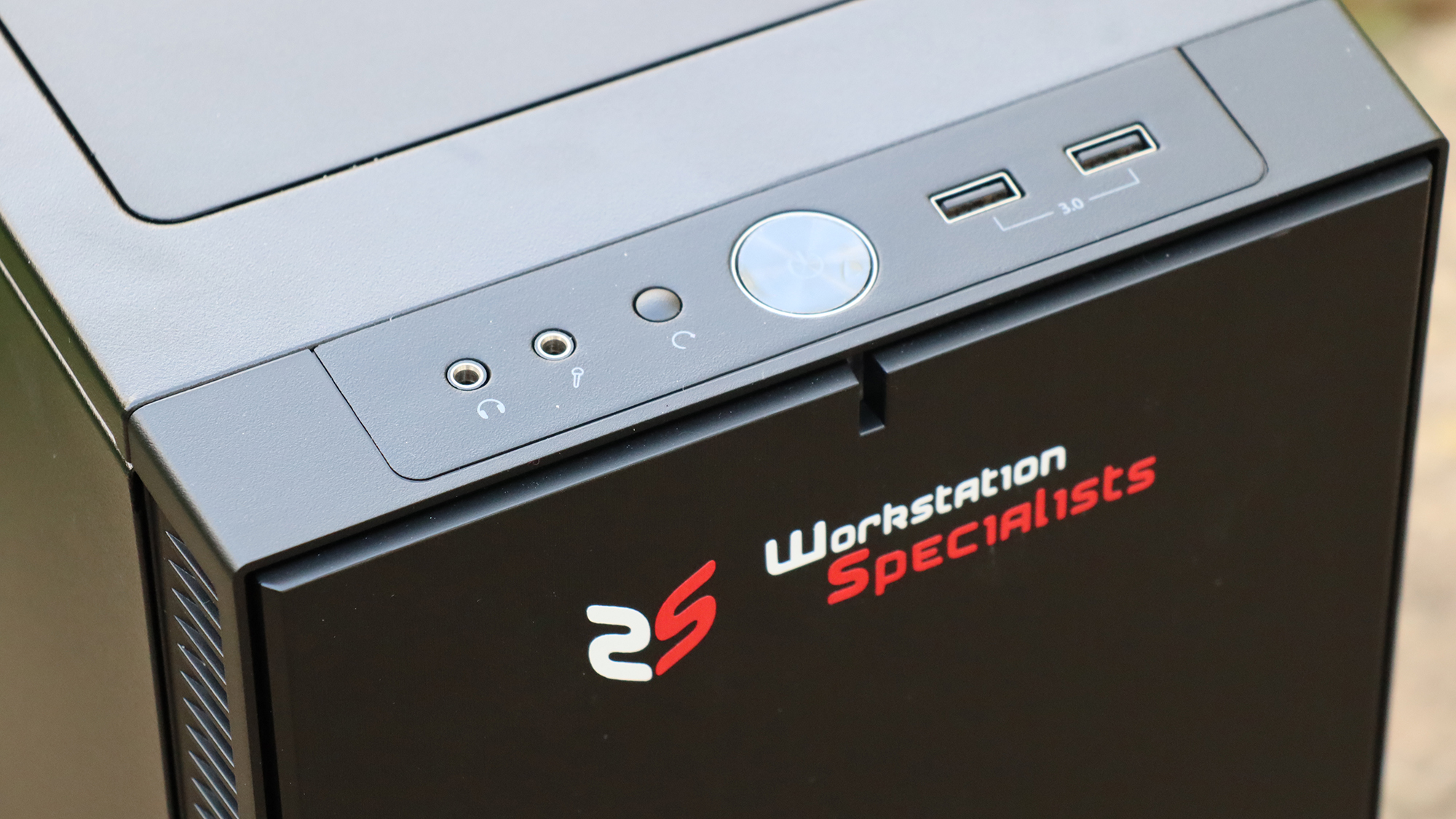Workstation Specialists WS-182A review: Zen 2 promises performance and affordability
AMD’s latest Ryzen 7 3000-series is now a serious option for professional workstations


The Workstation Specialists WS-182A shows that AMD’s latest Ryzen 7 generation can offer professionals true competition for the Intel Core i9 alternative.
-
+
Great rendering performance; Great everyday media software speed; Capable 3D modelling and GPU compute
-
-
No secondary storage included in this specification

AMD made a noticeable impact with its Ryzen Threadripper. However, the more mainstream Ryzen 7 merely showed Intel stiff competition, rather than dominance. Now the third version of the Ryzen 7 - containing the second generation of AMD's Zen architecture - has arrived to see if it can take things that little bit further. We got our first look at the AMD Ryzen 7 3700X in the WS-182A workstation from Workstation Specialists.
Workstation Specialists WS-182A review: Processor and Memory
The AMD Ryzen 7 3700X takes over from where the 1700X and 2700X left off, offering the same eight-core configuration - but the underlying architecture is quite different. For its second generation of Zen, AMD has separated the processor cores from the on-chip I/O, putting the cores on a 'chiplet'. Each chiplet has eight cores, with some disabled for the lesser Ryzen models, whilst the Ryzen 9 has two chiplets offering 12 or 16 cores in total.
The benefit of this separation is that the cores can be manufactured using the latest 7nm process for higher frequencies and lower power consumption, whilst the I/O die including the memory controller remains at 12nm to save money and manufacturing complexity. The two elements communicate with each other via AMD's superfast Infinity Fabric.
The 3700X has a base clock of 3.6GHz and a 4.4GHz boost, whilst there's also a 3800X with a 3.9GHz base and 4.5GHz boost clocks. On the plus side, the 3700X only has a 65W TDP, compared to the 3800X's 105W, so it won't be as hungry on the power supply. However, the performance differences might not be that great in practice. Workstation Specialists hasn't overclocked this CPU, although there will be plenty of room for this. However, AMD's Precision Boost Overdrive will squeeze as much performance out of the chip as the cooling will allow. We've found it very effective with the Threadripper CPUs.
All the chips have the same new features, highlights of which include support for 3,200MHz DDR4 memory and PCI Express 4.0, which doubles bus width from 256-bit to 512-bit, effectively doubling maximum throughput - if you have a PCI Express 4.0 device. Workstation Specialists has partnered its 3700X with a very healthy 64GB of 3,400MHz DDR4 SDRAM, and is using this clock speed via an XMP setting. The memory is supplied as four DIMMs, filling all four of the available slots on the ASUS TUF GAMING X570-PLUS motherboard, leaving no room for upgrade, but with 64GB as standard, you probably won't need to.. Sadly, although there are four modules, the processor only supports dual-channel memory, unlike the Threadripper CPU.
Workstation Specialists WS-182A review: Graphics Acceleration
Workstation Specialists has made a sensible choice for a system in this class by including the current 'affordable' high-end professional graphics champ - the NVIDIA Quadro RTX 4000. The headline feature with the RTX series is its hardware acceleration for real-time raytracing, but most of the time you'll just appreciate its greater performance compared to the previous P4000.

The RTX 4000 has 2,034 CUDA cores, rather than 1,792 for the P4000. These run at a base 1,005MHz with a 1,545MHz boost, whereas the P4000 only hits 1,480MHz, so there should be a notable performance improvement. Both cards have 8GB of frame buffer on a 256-bit interface, but the RTX 4000 uses GDDR6 whereas the P4000 uses GDDR5. The effective clocks are significantly different - 13,000MHz versus 7,604MHz. This makes for much greater bandwidth of 416GB/sec versus 243.3GB/sec.
The one downside is that the RTX 4000's maximum power is now 160W, whereas the P4000 consumed a much more frugal 105W. But aside from the new raytracing ability, the RTX 4000 also supports resolutions up to 7,680 x 4,320 at 60Hz, and there's a USB-C port alongside three full-sized DisplayPort 1.4 connections, whereas the P4000 just had four of the latter. Suffice to say, there are lots of advantages with the new card.
Workstation Specialists WS-182A review: Storage
As we mentioned earlier, the new AMD Zen 2 chips support PCI Express 4, and one of the first places where you'll be able to take advantage of this is storage. You can already get PCI Express 4.0 M.2 NVMe SSDs, and Workstation Specialists has selected a Gigabyte AORUS unit with a 2TB capacity that promises 5,000MB/sec reading and 4,400MB/sec writing. When we tested these claims with CrystalDiskMark 6.0, we found them entirely borne out. The AORUS achieved 4,988MB/sec sustained reading and 4,530MB/sec sustained writing, with the latter actually ahead of the specification.
To put these figures in perspective, these speeds are around 20 times faster than the current quickest conventional 7,200rpm SATA hard disks. The Ryzen 3000 series has 24 PCI Express 4.0 lanes, which are around twice as fast as PCI Express 3.0, and only four are used for connecting to the X570 chipset. So there's enough bandwidth for a second PCI Express 4.0 M.2 NVMe slot, plus eight SATA 6Gb/sec ports. However, Workstation Specialists hasn't included any secondary storage with this specification.
Workstation Specialists WS-182A review: Chassis Design
The Fractal Design Define S chassis is reasonably compact and has the usual serious black appearance of most workstations. It has room for 3 x 140mm or 1 x 180mm fan water cooling at the top, although Workstation Specialists has opted for air cooling with this model. There are two USB 3.0 ports on the front top edge, alongside audio minijacks for headphone and microphone.
Inside, the case has room for three 3.5in or 2.5in drives, and there are two further 2.5in drive mounts. So there's the possibility for plenty of extra capacity if you're planning on performing storage-intensive tasks like video editing, even if the 2TB main drive will be perfectly adequate for less hungry activities.

The power supply included is 550W 80-Plus Gold Certified, which should be adequate for the components included. However, if you're thinking of adding another graphics card then the 750W option that is available might be the better choice.
The rear backplane sports a legacy PS/2 port for mouse or keyboard, alongside four USB 3.2 Gen 1 ports (essentially the same as the former 3.0). There's a USB 3.2 Gen 2 Type C port and two Type A, plus Gigabit LAN. The DisplayPort and HDMI connections on the backplane are for use with processors that have built-in graphics, so won't be active with the Ryzen 7 3700X. Finally, you get the usual array of five analog audio minijacks and S/PDIF optical digital. It's a reasonable selection of ports, but not overwhelming.
Workstation Specialists WS-182A review: Processor Performance
Although the AMD Ryzen 7 3700X has the same number of cores as its two predecessors, the performance tweaks have been significant. In Maxon Cinebench R15's CPU test, the WX-182A managed 2,039, where the previous 2700X only managed 1,791 in the Armari Magnetar V25R-RA750G2. That's a 14 per cent improvement and places the 3700X close to what Intel's Core i9-9900K can achieve, which is 150 more expensive. The Maxon Cinebench R20 score of 4,698 is commendable, although we don't have much to compare with for this recently released benchmark.
In our IT Pro Media Benchmarks, the WS-182A managed an overall result of 339; again, not far off what an Intel Core i9-9900K could achieve. The image editing result of 196 would be a little ahead, whilst the video editing score of 327 and multi-tasking result of 394 would be a little behind - but you're still getting great results for all manner of media-related activities.
Looking at Geekbench 4, the single-threaded result of 5,609 is, amazingly, almost identical to the monster Armari Magnetar X200, although the multi-threaded result is far behind at 35,542, due to the 20-core deficit. But if you compare these results to the AMD Ryzen 7 2700X, you're getting 12% faster single-threaded performance and 33% quicker multi-threaded speed - quite a boost.
Workstation Specialists WS-182A review: Graphics Performance
Whilst the AMD processor is holding its own for CPU-related tasks, the NVIDIA Quadro RTX 4000 is a clear leader in its class for graphics acceleration. It managed a commendable 210.84 in the OpenGL portion of Maxon Cinebench R15. Looking at selected highlights from SPECviewperf 13, this will be a great system for 3D modelling for animation, with 205.51 in 3dsmax-06 and 280.85 in maya-05. If CAD, engineering or product design are more your focus, the WS-182A will excel here too, with 286.32 in catia-04, 273.82 in creo-02, 346.94 in snx-04, and 161.99 in sw-04. There's plenty of grunt here for GPU-based rendering as well. The Quadro RTX 4000 posted 6,002 in the LuxMark 3.1 OpenCL test.

Workstation Specialists WS-182A review: Verdict
Overall, the Workstation Specialists WS-182A will be a great 3D modelling, animation or engineering design system and it has plenty to offer when you need to render out your work too. It will be great for image processing and video editing or encoding, although the latter might necessitate a storage upgrade. If you're looking for a capable workstation that doesn't break the bank, choosing one based around AMD's latest Ryzen 3000 series has become a seriously sensible decision.
Verdict
The Workstation Specialists WS-182A shows that AMD’s latest Ryzen 7 generation can offer professionals true competition for the Intel Core i9 alternative.
| Processor: | 3.6GHz AMD Ryzen 7 3700X |
| RAM: | 64GB 3,400MHz DDR4 |
| Graphics: | 8GB GDDR6 NVIDIA Quadro RTX 4000 |
| Storage: | 2TB Gigabyte AORUS M.2 NVMe PCI Express 4.0 SSD |
| Operating System: | Windows 10 Professional 64-bit |
| Warranty: | 3 years RTB NBD |
| Website: | www.workstationspecialist.com |
Get the ITPro daily newsletter
Sign up today and you will receive a free copy of our Future Focus 2025 report - the leading guidance on AI, cybersecurity and other IT challenges as per 700+ senior executives
Dr James Morris has worked as a technology journalist for over 25 years, including spending nine years on the staff of market-leading computer magazine PC Pro, the last five of which were as the publication’s editor. He specialises in enterprise-grade software and hardware, with a particular focus on content creation. He launched a pioneering video channel for HEXUS.net in 2006 and ran the video reviews channel for TrustedReviews.com for four years. He also runs a successful online digital content and commercial video production company, t-zero communications Ltd.
Dr Morris is a prolific technology writer and contributes commercial content for major IT brands including AMD, BlackBerry, Dell, Cognizant, HP, and IBM. He published a book on artificial intelligence, Can Computers Create Art? in 2009. He is also an academic, and is currently Pathway Director of the MA, Interactive Journalism at City, University of London.
Previously, he was course leader for the BA in Web Media Production at Ravensbourne University. He has a PhD in Philosophy, Art and Social Thought from the European Graduate School in Switzerland, a Master's in Media Arts from the New School in New York, USA, and a Bachelor's in Social Anthropology from the London School of Economics.
Dr. Morris can be found on Twitter at @Cyberwest, or emailed at j@tzero.co.uk
-
 ‘Phishing kits are a force multiplier': Cheap cyber crime kits can be bought on the dark web for less than $25 – and experts warn it’s lowering the barrier of entry for amateur hackers
‘Phishing kits are a force multiplier': Cheap cyber crime kits can be bought on the dark web for less than $25 – and experts warn it’s lowering the barrier of entry for amateur hackersNews Research from NordVPN shows phishing kits are now widely available on the dark web and via messaging apps like Telegram, and are often selling for less than $25.
By Emma Woollacott Published
-
 Redis unveils new tools for developers working on AI applications
Redis unveils new tools for developers working on AI applicationsNews Redis has announced new tools aimed at making it easier for AI developers to build applications and optimize large language model (LLM) outputs.
By Ross Kelly Published
-
 Google layoffs continue with "hundreds" cut from Chrome, Android, and Pixel teams
Google layoffs continue with "hundreds" cut from Chrome, Android, and Pixel teamsNews The tech giant's efficiency drive enters a third year with devices teams the latest target
By Bobby Hellard Published